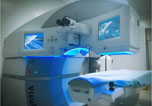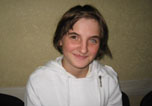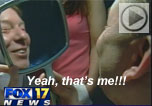- Over 55,000 LASIK and cataract procedures (including on over 4,000 doctors)
- The FIRST center in TN to offer Laser Cataract Surgery
- Introduced bladeless all-laser LASIK to the state
- Implanted the state's first FOREVER YOUNG™ Lens
- The first surgeons in the US to perform a new Intacs surgery to treat keratoconus
- Helped patients from 40 states and 55 countries
- International referral center for cataract surgery and LASIK complications
- Read Dr. Wang's book: LASIK Vision Correction
Why did you decide to have LASIK? Why did you choose Dr. Wang? How has your life changed since your LASIK procedure?
What is your advice for people considering LASIK?
Click to read more
| Home | Print This Page |
Letter: The Cause of Corneal Astigmatism
by Ming Wang, MD, PhD
![]()
The following refers to a letter from David Muller, MD, that appeared in our September 2011 edition.
With great interest, I read Mr. Muller’s opinion that corneal astigmatism (especially moderate to high) is perhaps due to a change in the shape of a cornea that is a bit weak. I would like to present the following thoughts in support of his position.
First, human beings are born with with-the-rule corneal astigmatism but die with against-the-rule corneal astigmatism. Perhaps the reason that the “footballs” in our eyes turn 90º is that, over time, corneas gradually succumb to gravity and the weight of intraocular fluid. After several decades of life, if the cornea is a bit weak, its inferior portion sags, steepening the inferior portion of the vertical meridian of the cornea. At the same time, the superior portion of the vertical meridian (near the visual axis) becomes flatter.
Second, I have always thought that, in a cornea with high cylinder and a slightly bent bowtie, if the cornea were large enough (ie, a diameter of 120-1,200 mm instead of 12 mm), then eventually the two ends of the bent bowtie would connect and form a claw- C pattern (similar to what is seen with pellucid marginal degeneration, indicating weakness). In other words, I imagine the two ends of the bowtie gradually extending outward, “leaving” the cornea, bending around, and eventually connecting to each other “in space.” In physics, there is actually an interesting and somewhat analogous situation: although most of the time we think the center of mass (CM) of an object is situated within the physical body of that object, in the case of a bent rod, the location of its CM is actually really weird! If I were a little bug crawling along the bent rod in search of the rod’s CM, I would have an unsettling out-of-body experience. Namely, I would have to leave the rod and go into empty space in order to find the CM of the rod. The CM is not in the physical body of the rod itself; rather, it is hanging in midair.
The point that I am trying to make here is that, sometimes, we need to be imaginative and venture into unconventional and uncomfortable places (such as thinking of the CM of an object as being located outside the physical body of the object itself) in order to find the physical reality. Similarly, we need to be willing to imagine that a cornea with moderate-to-high astigmatism and a slightly bent bowtie can be somewhat weak in terms of biomechanical strength, since we can imagine that the two ends of the bowtie can be thought of as coming out of the cornea, gradually bending, and eventually connecting to each other to form a claw-C (indicating weakness) somewhere in space. Such a way of thinking helps us understand why such an astigmatic cornea is biomechanically weak.
I think Mr. Muller’s insight that a cornea’s moderate-to-high astigmatism may be a manifestation of its weakness will advance our understanding of corneal biomechanics. It may also improve the clinical treatment of our patients, since we now know that perhaps the earliest sign of impending biomechanical decompensation of a cornea—way before the appearance of any signs of keratoconus or even forme fruste keratoconus—is its astigmatism.
MING WANG, MD, PHD
Nashville, Tennessee
Read More ...
Our new texbooks
A 501c(3) charity that has helped patients from over 40 states in the US and 55 countries, with all sight restoration surgeries performed free-of-charge.




















